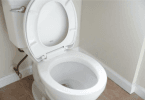Ever tried holding two metal pieces in place with one hand while welding with the other? If so, you know the struggle: shaky seams, misaligned joints, and wasted time fixing warped parts. It’s a frustrating problem for beginners and seasoned fabricators alike.
That’s where the welding fixture quietly changes the game.
A welding fixture is a dedicated support tool that holds parts securely and precisely during welding. It doesn’t just “make the job easier” — it makes high-quality, repeatable results possible. Whether you’re fabricating car frames, aerospace components, or DIY repairs, fixtures play a vital (and often under-appreciated) role in accuracy, efficiency, and safety.
In this guide, we’ll break down what welding fixture are, why they matter, and how to choose the right one. You’ll walk away with a clear understanding of their benefits, types, components, and best practices — no jargon, no fluff.
Contents
What Is a Welding Fixture?
At its core, a welding fixture is a stable platform or tool used to hold metal parts in place during welding. Unlike a jig (which guides the tool), a fixture’s main purpose is to position and secure the workpiece.
Why it matters:
- Ensures correct part orientation
- Keeps welds consistent across parts
- Prevents shifting, distortion, or misalignment during heat exposure
By locking parts in place and maintaining precise positioning, a welding fixture allows for greater control and accuracy — especially when repeatability is key.
Core Benefits of Using Welding Fixtures
Here’s why every serious fabricator, from hobbyists to high-volume manufacturers, should care about welding fixtures:
| Benefit | Why It Matters |
| Precision & Accuracy | Keeps parts aligned so welds land exactly where intended. |
| Productivity | Reduces setup time and rework by providing consistent positioning. |
| Cost Efficiency | Cuts labor time and material waste by preventing errors. |
| Safety | Holds parts securely, reducing the risk of burns or accidents. |
| Distortion Control | Prevents thermal warping during high-heat welding processes. |
In short, a well-designed fixture boosts quality and efficiency while minimizing headaches.
Main Types of Welding Fixtures
There’s no one-size-fits-all. The type of fixture you need depends on your project’s complexity, volume, and precision requirements. Let’s explore the most common types:
1. Dedicated (Fixed) Fixtures
- Best for: High-volume production with identical parts
- Pros: High repeatability, fast cycle times
- Cons: Inflexible; can’t be easily reconfigured for different parts
2. Adjustable or Modular Fixtures
- Best for: Prototyping, custom work, small to medium runs
- Pros: Highly versatile, reusable, and cost-effective
- Cons: Slightly slower setup time than fixed fixtures
3. Manual Fixtures
- Best for: Low-volume, budget-friendly applications
- Pros: Simple, affordable, and effective for basic jobs
- Cons: Relies on operator precision; slower than automated systems
4. Semi-Automatic Fixtures
- Best for: Mid-volume production needing balance of speed and flexibility
- Pros: Uses pneumatic/hydraulic assistance to boost efficiency
- Cons: More expensive than manual; requires maintenance
5. Fully Automatic Fixtures
- Best for: Robotic welding lines, high-precision manufacturing
- Pros: Integrated sensors and CNC control for maximum repeatability
- Cons: High upfront cost; best for large-scale operations
6. Magnetic Fixtures
- Best for: Quick setups on ferrous metals
- Pros: Great for irregular or complex shapes
- Cons: Limited holding force compared to clamps
Key Components of a Welding Fixture
To understand how fixtures work, it helps to break them down into their essential parts:
| Component | Function |
| Base Plate | Provides a stable platform for all other components. |
| Locators | Pins, stops, or blocks that ensure exact part placement. |
| Clamps & Supports | Secure parts in place during welding. |
| Positioners | Allow rotation or tilt for better torch access. |
| Additional Features | Magnets, adjustable arms, quick-release mechanisms for flexibility and ergonomics. |
Designing a fixture isn’t just about holding things in place. It’s about making sure the fixture:
- Is rigid enough to prevent vibration or movement
- Accounts for thermal expansion during welding
- Allows enough clearance for welding torches or robotic arms
- Is ergonomic for the operator to use efficiently and safely
Design Considerations & Best Practices
If you’re designing or selecting a welding fixture, keep these principles in mind:
Repeatability
Fixtures must position parts in the exact same place every time. Even a 1 mm variation can affect weld quality in precision applications.
Torch Accessibility
Make sure there’s enough clearance for the torch or robotic arm to reach the weld joints without collision.
Ease of Use
Quick-release clamps and ergonomic loading/unloading improve productivity and operator comfort.
Rigidity
Fixtures should resist deflection or vibration. Rigid fixtures lead to stronger, cleaner welds.
Thermal Expansion
Consider how heat affects metal during welding. Design fixtures that allow for slight movement or use materials that resist warping.
Customization
For complex geometries, a custom fixture may be needed. It should match the part’s contours for maximum stability.
Applications & Real-World Use Cases
Welding fixtures are everywhere — often hidden behind the scenes, but essential to final product quality.
Automotive Manufacturing
Fixtures are used to hold frame components, panels, and sub-assemblies in place for robotic welding. Accuracy here is critical to ensure safety and alignment.
Aerospace & Industrial Fabrication
In high-tolerance industries, fixtures are indispensable for ensuring welds meet stringent quality standards.
DIY & Home Projects
Even small workshops benefit from basic welding fixtures. They improve both safety and weld appearance.
Prototyping & Custom Fabrication
Modular fixtures shine in R&D or low-volume settings where flexibility is key.
A Quick Word About Tools Like Ours
If you’re exploring how to optimize your workflow, understanding fixture design is only part of the equation. The right tools — from clamps to modular fixture kits — can help you set up, adjust, and execute with precision. Resources like our guide to welding fixture design (for example) walk through real-world setups, materials, and modular solutions that scale from prototyping to full production without locking you into one rigid design. Companies such as Denaliweld take a similar approach, developing flexible systems that support both speed and accuracy in modern manufacturing.
We designed it to be educational, not salesy — because better fixtures mean better welds, no matter whose gear you’re using.
Conclusion: Small Tool, Big Impact
Welding fixtures may not be glamorous, but they are absolutely essential to quality fabrication.
By holding parts steady, ensuring alignment, and supporting efficient workflows, fixtures deliver:
- Higher-quality welds
- Faster production times
- Safer working conditions
- Lower costs from reduced rework and waste
Whether you’re an engineer designing robotic welding cells or a DIY welder in your garage, investing time and thought into fixture selection pays off in the long run.
So next time you strike an arc, remember: it’s not just your skill that determines the weld — it’s also what’s holding everything together.







